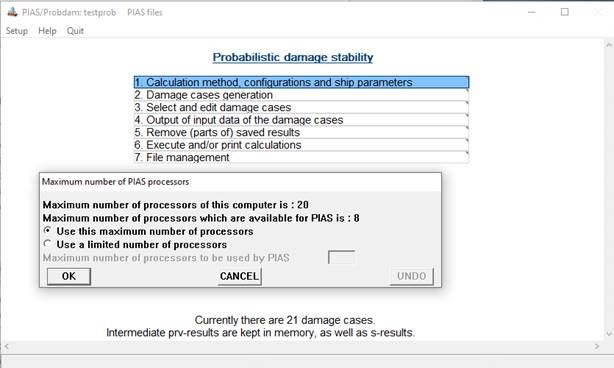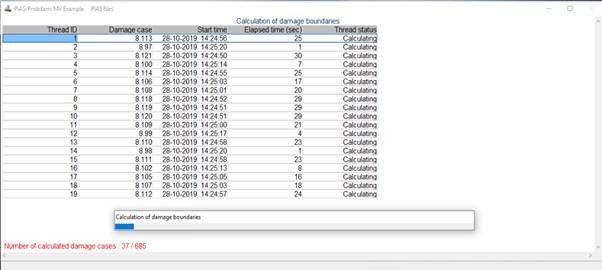PIAS ES 3: Vigintithreading
PIAS was adapted around 2015 so that more than two calculation cores can be used in parallel.
In view of the overhead time involved in starting up a separate calculation task, a maximum of 8 simultaneous calculation tasks was chosen at the time.
Meanwhile, multithreading has been implemented in even more places within the PIAS for lengthy and compute-intensive tasks such as:
• probabilistic damage stability: the optimization of the damage boundaries.
• probabilistic damage stability: the generation of damage cases.
The last few years multi-core computers have become widely available and there are now PC‘s available for the common user which have ten or even more cores, where hyperthreading allows twenty or more threads to run simultaneously. Especially with time consuming calculation tasks, such as the ones mentioned above, the overhead time hardly plays a role and one can gain a considerable amount of time by calculating with more than 8 threads.
Therefore, the maximum number of parallel processes within PIAS has been increased from eight (octothreading) to twenty (vigintithreading).
To give the user a clear insight in the use of multiple threads, especially in time consuming calculations and in combination with vigintithreading, PIAS has been extended with a thread monitoring interface. This interface is visible during the calculations and shows relevant and real time information per thread, such as: information about the status, i.e. a description of the current task of the thread, start time and elapsed time. This thread monitoring interface is also available for single-, dual- and octothreading.



